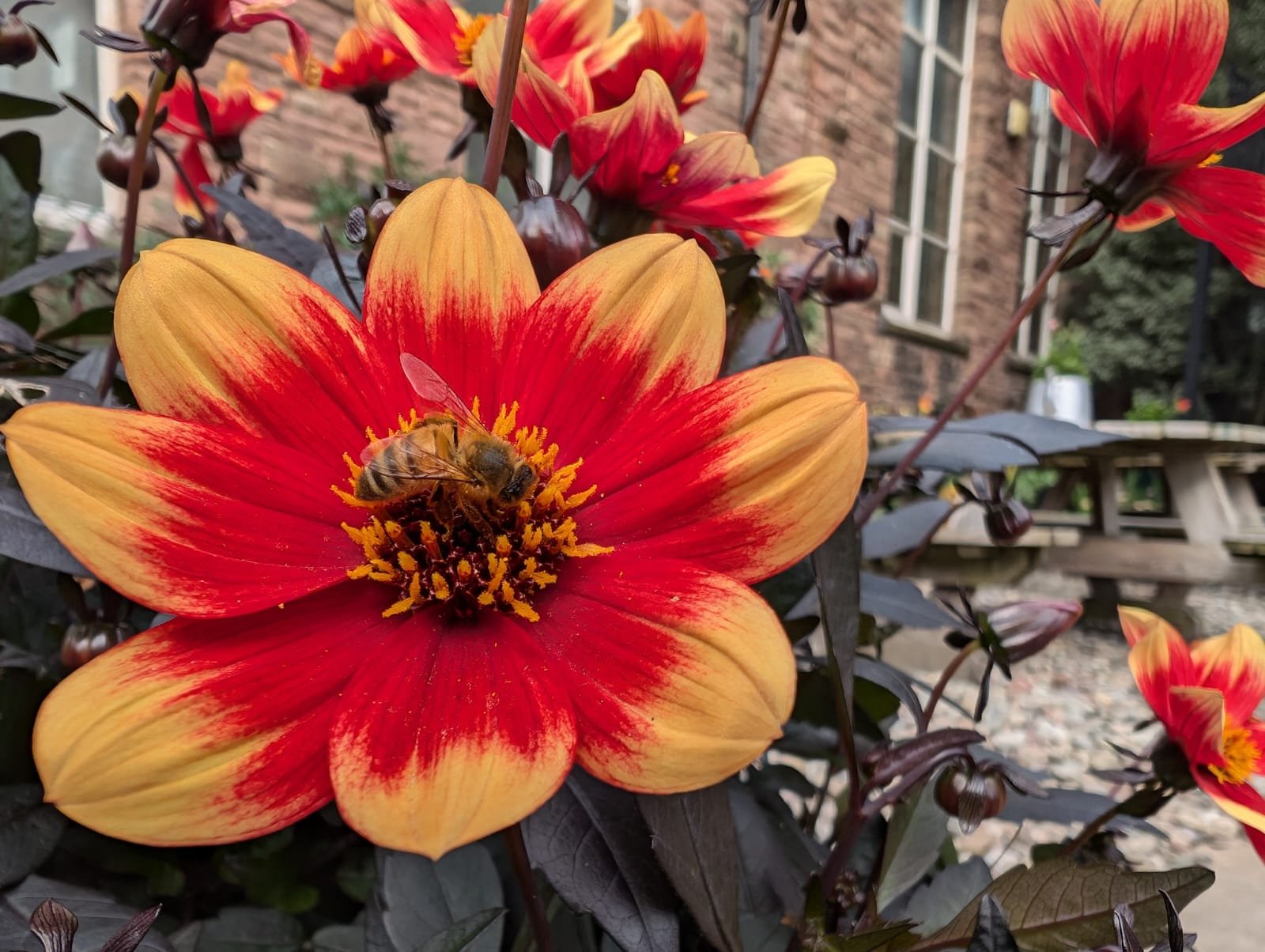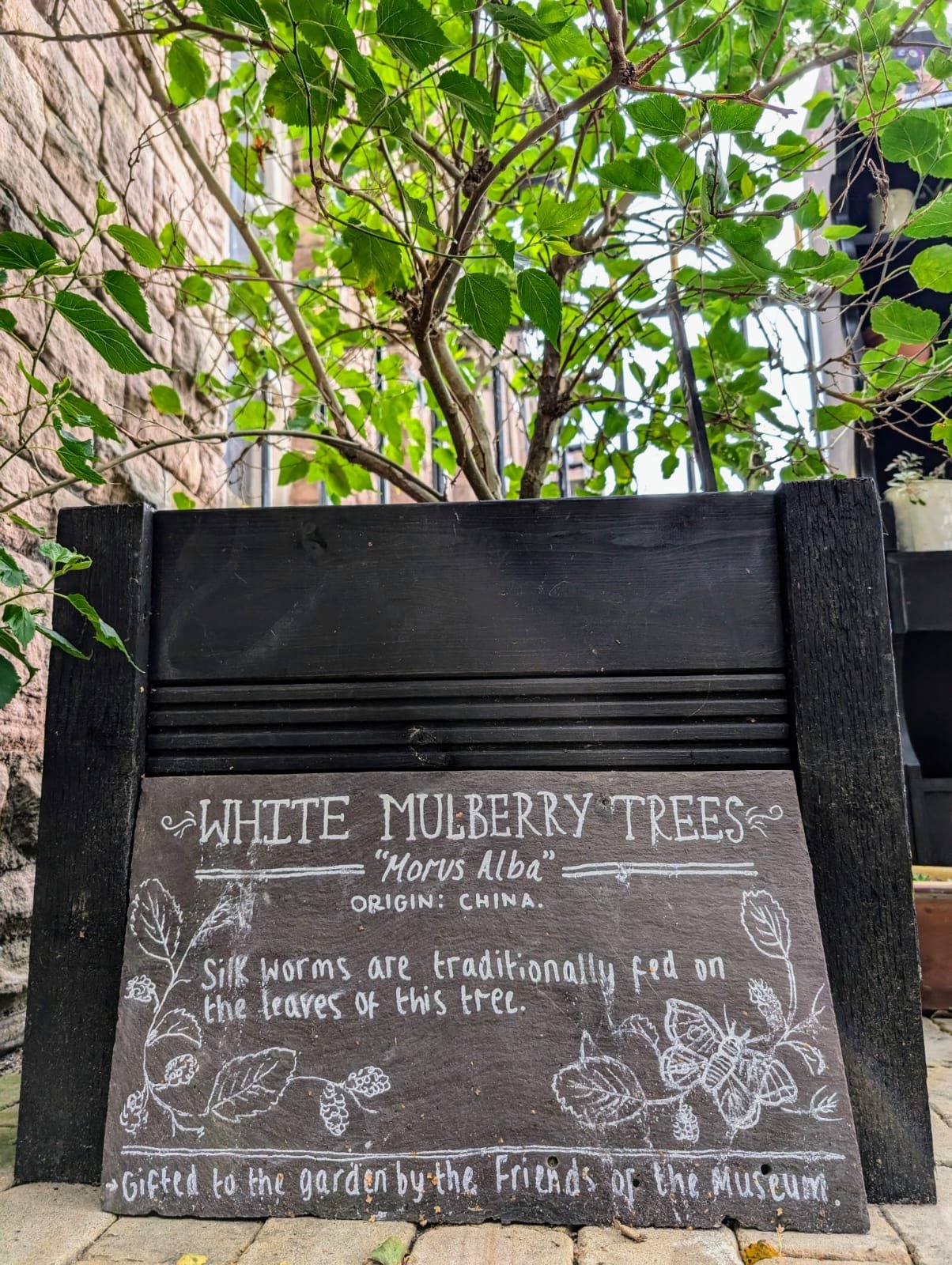
Tunnicliffe Garden
WELCOME - RELAX, PLAY OR PICNIC
You are welcome to sit in our Tunnicliffe Garden on our decorated benches. Take a cup of tea or coffee outside from our tea room or eat your own picnic.
There are toys available for children to use in the garden and free trails available at the front desk.
We are thrilled that the garden has been awarded a Gold Award by Britain in Bloom 2024 in the Small Tourist Attraction category. Congratulations to all our volunteers for making this happen.
wHICH PLANTS WILL YOU SEE?
We have a fabulous group of volunteers who work hard throughout the year to make sure that there is always lots of colour!
This year extra work has been put in to introduce plants that can be used for dyeing fabric. The New Macclesfield School of Art have a series of dyeing workshops planned for the Autumn using these resources. You can book onto these through the What’s On page.
This ‘Growing Colours’ project has been sponsored by Cheshire Community Foundation - Green Shoots funding.
TUNNICLIFFE ARTWORK
The paintings in the garden were inspired by the work of Charles Tunnicliffe OBE (1901 - 1979). Tunnicliffe was born in Langley. He studied in the main Silk Museum building when it was the Macclesfield School of Art. He is most well known for his stunning paintings, etchings and engravings of birds.
The paintings in the garden were created by members of the Have a Dabble art group. The art classes run every Friday from 9 - 12 and 1 - 4. New members are always welcome. You can find more information on our What’s On page.
seeds of the future
In the seventeenth century a group of Huguenot artisans, exiled silk weavers from Belgium and France took flight from their homeland. In their pockets they carried silk and seeds. Today we celebrate and remember their legacy and the tiny seeds of life they carried with them as we enjoy our ‘Auricula Theatre.’
Huguenots (French Protestants) silk weavers settled in the Spitalfields area of London and re-established their trade there. Alongside their trade they nurtured seeds of a special and unusual plant, the Auricula. Once in bloom the Huguenots arranged the flowers in rows of coloured pots, reflecting the warp and weft of their weaving, to create an Auricula Theatre.
Macclesfield has a very special link with the Huguenots, trading silk over the years with craftsmen in Spitalfields. It is important to us to have this Auricular theatre hereto commemorate the special relationship that developed between the Macclesfield Silk Industrialists and the skilled craftsmen in Spitalfields.
The Auricular plants flourish here in Macclesfield in the spring. During the summer and autumn months they are replaced by alpines and violas, with bulbs in the late winter and early spring.
Mulberry bushes
In the garden, on either side of the door to the building, are two mulberry bushes. These are very special plants for the Silk Museum as they are the main food eaten by silk worms. Bombyx Mori silkworms are raised for the production of silk and are very particular about what they eat!







